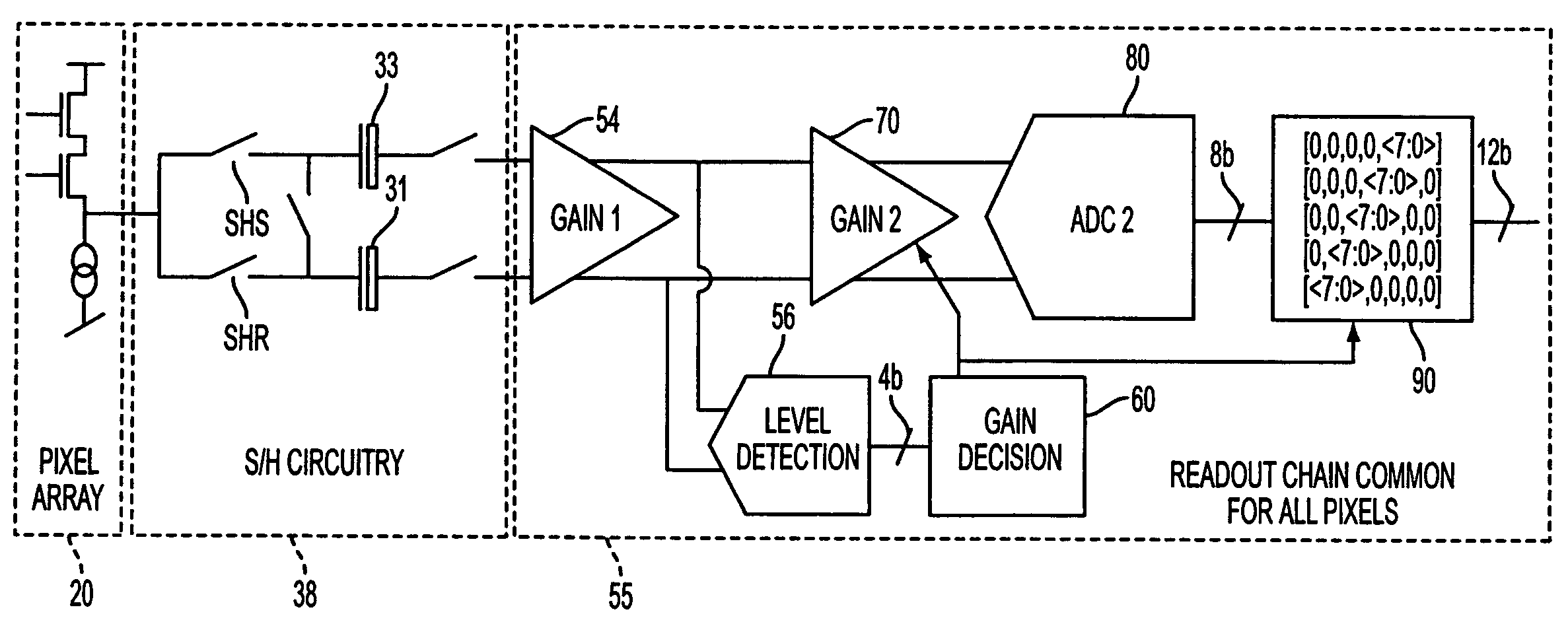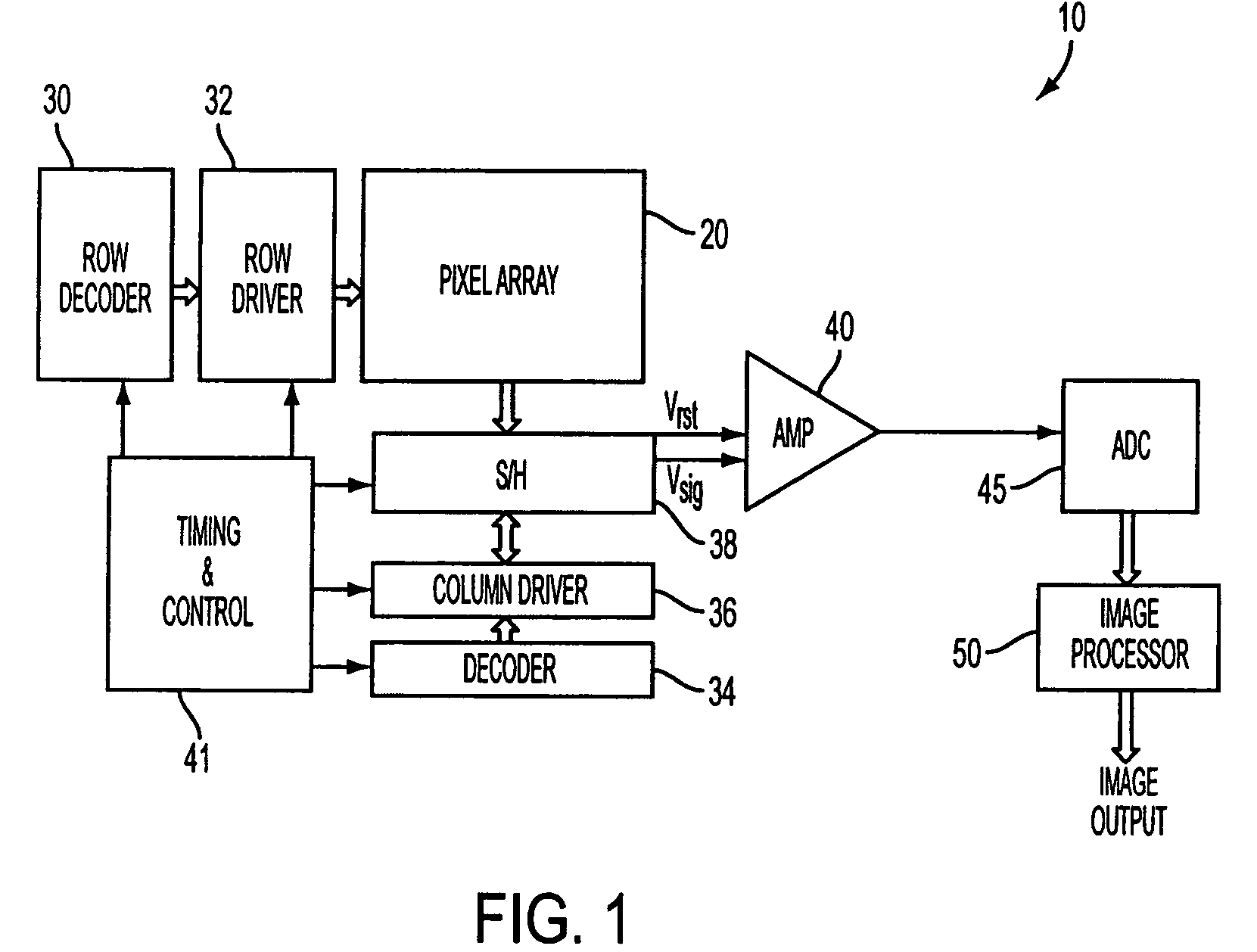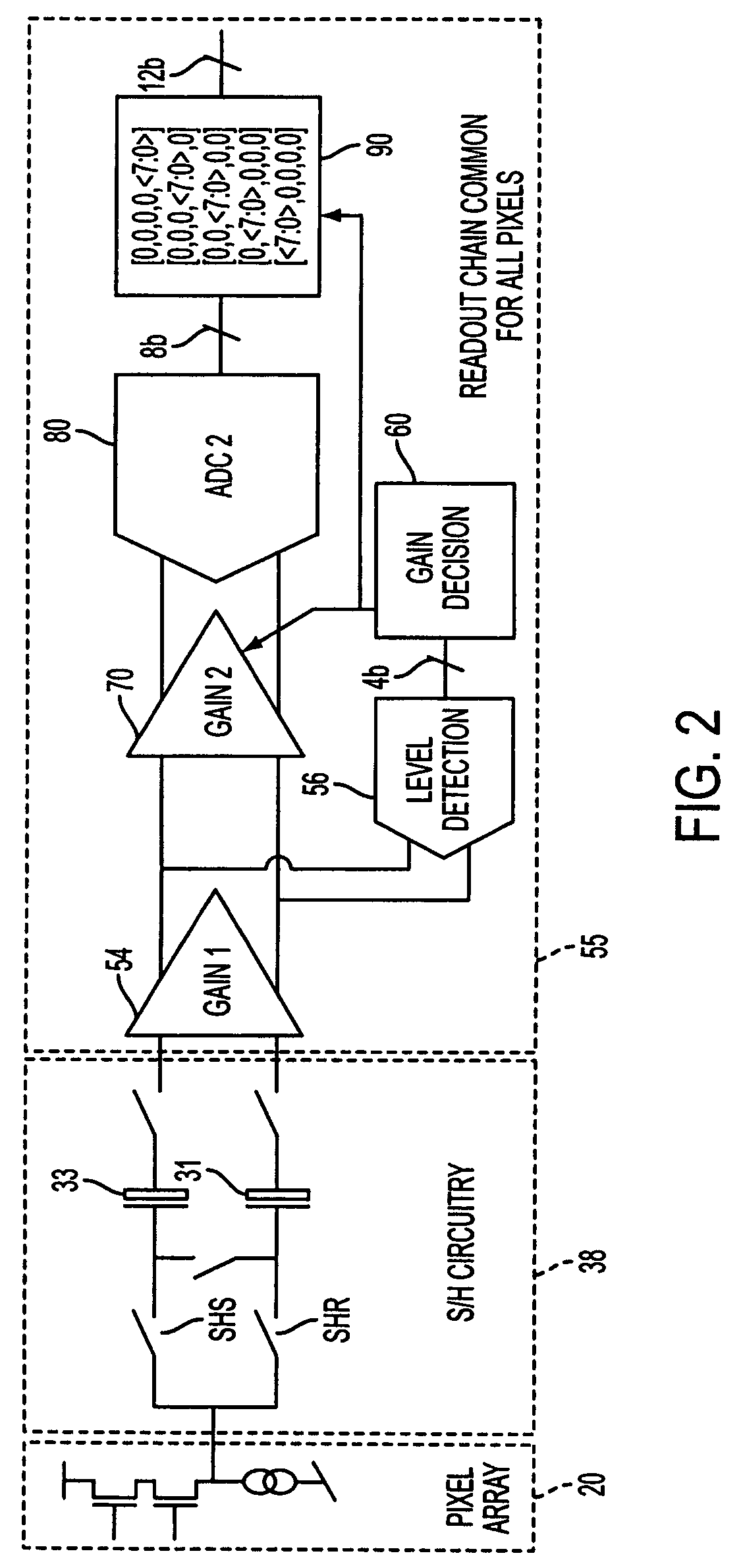Readout technique for increasing or maintaining dynamic range in image sensors
a dynamic range and image sensor technology, applied in pulse techniques, instruments, television systems, etc., can solve problems such as image distortion and limited dynamic range, and achieve the effect of increasing or maintaining the dynamic range of the image sensor, reducing the signal-to-noise ratio, and increasing the dynamic range of the imager
- Summary
- Abstract
- Description
- Claims
- Application Information
AI Technical Summary
Benefits of technology
Problems solved by technology
Method used
Image
Examples
Embodiment Construction
[0017]In the following detailed description, reference is made to the accompanying drawings, which form a part hereof and illustrate specific embodiments in which the invention may be practiced. In the drawings, like reference numerals describe substantially similar components throughout the several views. These embodiments are described in sufficient detail to enable those skilled in the art to practice the invention, and it is to be understood that other embodiments may be utilized, and that structural, logical and electrical changes may be made without departing from the spirit and scope of the present invention.
[0018]The term “pixel” refers to a picture element unit cell containing a photo-conversion device and transistors for converting electromagnetic radiation to an electrical signal. It should be appreciated, however, that the invention is not limited to any particular pixel type or configuration.
[0019]Typically, a high resolution analog-to-digital converter 45 (FIG. 1) is n...
PUM
 Login to View More
Login to View More Abstract
Description
Claims
Application Information
 Login to View More
Login to View More - R&D
- Intellectual Property
- Life Sciences
- Materials
- Tech Scout
- Unparalleled Data Quality
- Higher Quality Content
- 60% Fewer Hallucinations
Browse by: Latest US Patents, China's latest patents, Technical Efficacy Thesaurus, Application Domain, Technology Topic, Popular Technical Reports.
© 2025 PatSnap. All rights reserved.Legal|Privacy policy|Modern Slavery Act Transparency Statement|Sitemap|About US| Contact US: help@patsnap.com



